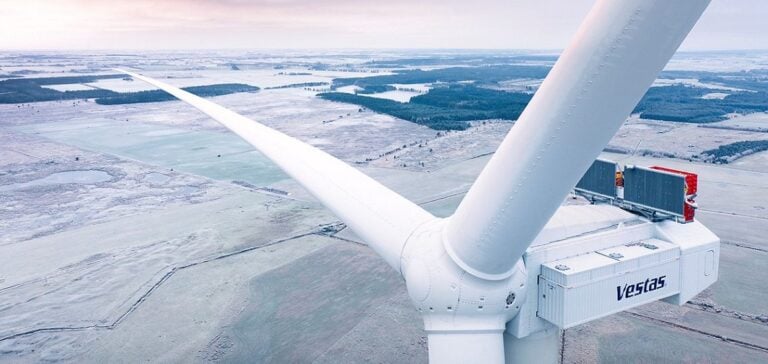Vestas, the Danish wind turbine manufacturer and world leader in the industry, recorded a significant increase in profits in the third quarter of 2024. From July to September, the company achieved a net profit of 127 million euros, a fourfold increase compared to the same period last year. This performance was driven by a 19% increase in revenue, now amounting to 5.177 billion euros.
Vestas’ order book was instrumental in these results. The company received 4.4 gigawatts (GW) of new turbine orders, with an average sales price of 1.10 million euros per megawatt (MW), bringing the total value of its orders to a record 28 billion euros. According to Vestas CEO Henrik Andersen, this influx of orders represents a strategic asset for the group in a high-demand sector, despite persistent financial challenges.
Vestas’ services, another solid pillar
Beyond turbine sales, Vestas continues to benefit from high demand for its maintenance, repair, and modernization services for wind turbines. Orders in this segment have reached 35.1 billion euros, further strengthening the company’s position in energy services, a crucial division for its future growth.
However, profit margins in this segment have grown more slowly than expected. This situation is primarily due to rising costs in Europe and America, as reflected in Vestas’ quarterly report. Inflationary pressures on raw materials and labor costs are affecting the company’s profit margins, a hurdle that may persist in the coming months.
Annual forecasts maintained despite challenges
Despite these factors, Vestas has not altered its forecasts for the full year 2024, anticipating revenues between 16.5 and 17.5 billion euros, although the group has indicated that this amount could be at the lower end of this range. This forecast stability comes despite the 225 million euros in impairments announced in the second quarter, resulting from significant investments and restructuring in some activities.
This cautious stance, however, did not reassure investors, and Vestas’ shares recorded a notable 11% drop on the Copenhagen Stock Exchange. This decline is due to market expectations, which hoped for an improvement in short-term financial prospects, in a general market downtrend of 2%.
A future supported by growing demand for renewable energy
The renewable energy sector, which is rapidly expanding, offers favorable long-term prospects for Vestas. Although operational costs are rising, the global demand for sustainable and renewable energy solutions is expected to keep investment levels high. As governments and companies move towards energy transition, Vestas seems well-positioned to capitalize on this growing demand, particularly in the European and American markets, where regulations support the rise of renewable energy.






















